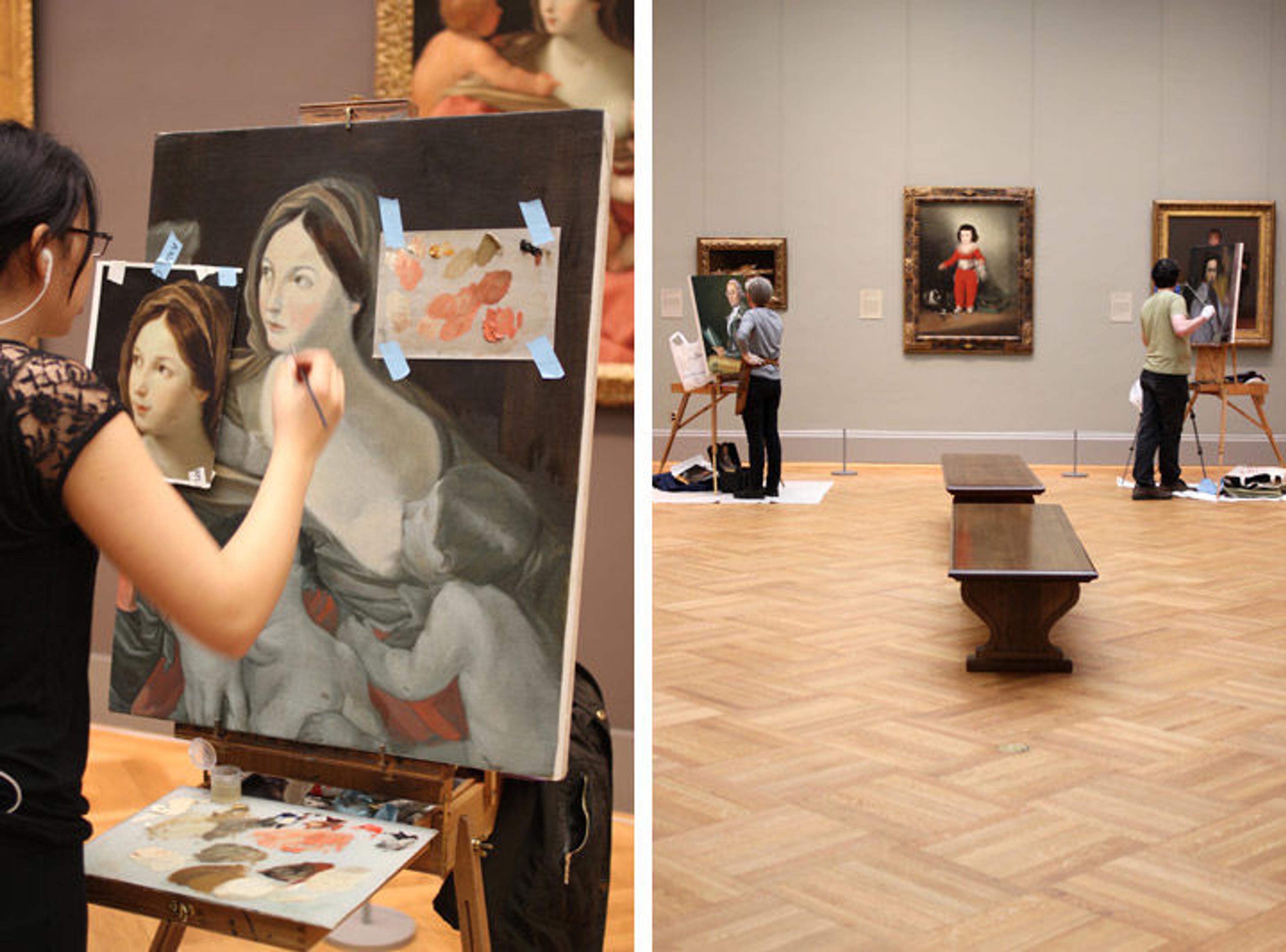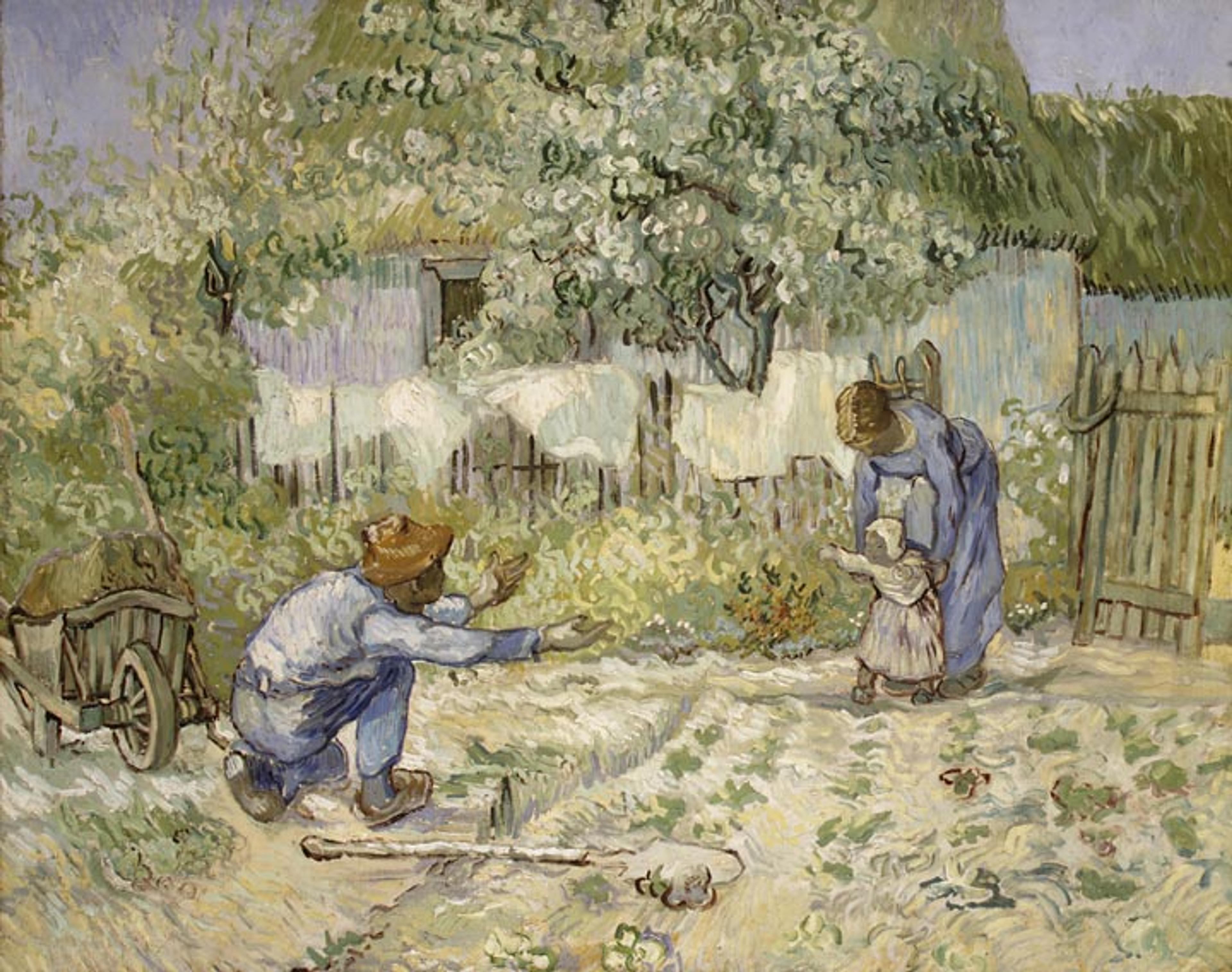The Copyist's Copy

Copyists from the New York Academy of Art at work in The Met's galleries, 2016. Photos courtesy of the author
"Go to . . . the Old Masters, talk to them—they are still alive and will reply to you. They are your instructors; I am only an assistant in their school."
—Jean-Auguste-Dominique Ingres
«The Met's Copyist Program is the longest-running program at the Museum, originating in 1872, only two years after the Museum first opened its doors. Since then, countless numbers of copyists have taken personal journeys while working from the artistic predecessors of their choice. It is within the inspirational walls of the galleries that the copyist faces their muse as well as their own artistic insecurities—all in open view of the public.»

John Sloan (American, 1871–1951). Copyist at the Metropolitan Museum, 1908. Etching; Plate: 7 3/8 x 8 7/8 in. (18.7 x 22.5 cm), Sheet: 13 x 14in. (33 x 35.6 cm). The Metropolitan Museum of Art, New York, Harris Brisbane Dick Fund, 1926 (26.92.27[10]). © 2016 Artists Rights Society (ARS), New York
In a 2011 letter to The Met's Copyist Program, one of the founders of the New York Academy of Art, Edward Schmidt, explained that "the [program] allows each student to approach the act of copying from any number of possible angles. Terms to express and approach going beyond the straight copy are translation, interpretation, reworking, and transformation." Additional terms such as variant, copy fragment, painted copies, reproduction copy, interpretative copy, literal copy, and autograph copy are all terms given to any specific copy based upon the perceived original intent of the copyist who created it. The subtle nuances of each indicates the complexity and the great value placed upon the genre of the copy that have been at play since antiquity.
Throughout history, copying served as an educational practice for both art students and accomplished artists alike. For example, many of Caravaggio's artworks have been lost to time, but because of the substantial number of copies that still exist, we have a more complete record of his works. The Met collection even includes copies by a varied range of artists, including Van Gogh's First Steps, after Millet, one in a series he made based on the work of Jean-François Millet that Van Gogh considered "translations" of the originals.

Vincent van Gogh (Dutch, 1853–1890). First Steps, after Millet, 1890. Oil on canvas; 28 1/2 x 35 7/8 in. (72.4 x 91.1 cm). The Metropolitan Museum of Art, New York, Gift of George N. and Helen M. Richard, 1964 (64.165.2)
The copyists must engage with countless variables at The Met not under their control such as distractions and interruptions, which include large crowds gathered next to their drop cloths. The Met is a very busy museum with scores of visitors that engage with the copyists directly as the artists try to let go of any preconceived expectations about their work and the road ahead of them within the time frame they have to work on their copy—typically one day per week over the course of eight weeks. Holidays in particular are incredibly busy at the Museum, which can make it even more challenging for artists to work on a copy. In these instances, the copyist may find themselves the subject of interest for visitors in as much as the paintings that surround them.
Despite all of the variables, the experience of the copyist is invaluable to their artistic practice. The process allows them to grow in ways that are at times uncomfortable, but will ultimately be rewarded through technical skills learned and then applied to their own works of art. The consensus among the copyists seems to be that what they have learned in the galleries, while studying directly from an original work of art, translates into their own works; these lessons become intuitive within their personal practice.
Leonoid Gervits, an instructor at the Art Students League of New York who has brought his classes to The Met for many years, noted on one occasion several artists' use of red within shadows, and told more than one copyist to follow suit. Such subtle nuances don't translate well from mere reproductions but are very clear in the gallery setting.

A copyist at work in the European Paintings galleries, ca. 1902–29.
There is also an element of serendipity to the program as to who may meander through the galleries on any given day. Interactions with the Museum's visitors—who represent all ages and ethnic backgrounds—are usually one of the favorite aspects of the copyist's experience while in the galleries. Children are usually very bold and curious, and will ask numerous questions about what exactly the copyist is doing. They sometimes linger, sitting on a bench situated near a copyist, and often return to the gallery more than once to assess the artist's progress.
Left: A copyist at work in front of a young audience member, 2016. Photo courtesy of the author

Tatiana, a student from the New York Academy of Art, was approached by a famous Chinese actor who was engaged by the colors she had arranged on her palette to paint her copy of Rembrandt's Portrait of a Man (1632). The man seemed to know more than your average person about painting, and insisted that one of his assistants take his portrait alongside Tatiana and her copy. Claire, a copyist from the Art Students League of New York, upon breaking down her easel for the day in front of her working copy of Anthony van Dyck's Self Portrait (1620–21), was approached by a tall gentleman who explained to her that he was a direct descendant of the artist. She was speechless at the end of the day's session. She had originally chosen this Van Dyck work because it had pulled her in somehow; it had chosen her, and although she couldn't verbally articulate why, she was able to translate what she felt in the copy she was inspired to recreate at The Met.
Learn more about the Copyist Program at The Met, and don't forget—the due date for applications for the fall semester is September 14, 2016!
Related Link
MetMedia: #MetKids—What's That Artist Making in the Galleries?
Laurie Murphy
Laurie Murphy is a New York City–based teaching artist.